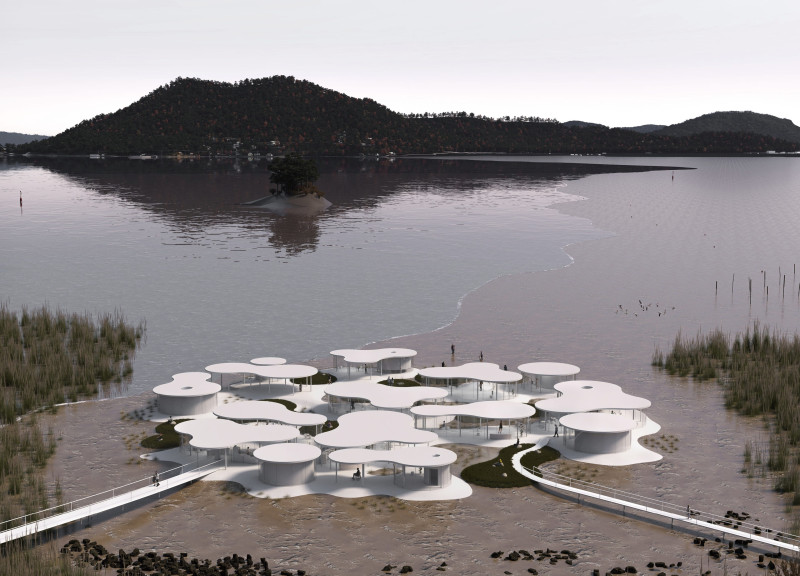5 key facts about this project
The design comprises a series of organically shaped islands that mimic natural formations, fostering fluid movement and interaction with the landscape. The layout encourages both communal and private spaces, catering to diverse user needs. Key materials include reinforced concrete for structural integrity, glass for transparency and natural light, metal for durability, natural stone for pathways, and sustainable wood for a warm, inviting texture. These choices ensure the project not only serves its function but is also respectful of the environment.
Innovative Interaction with the Surrounding Environment
What sets this project apart is its dynamic interaction with tidal patterns, which informs the architectural layout. These fluctuations encourage users to engage with the natural ebb and flow of the environment, contributing to a deeper understanding of ecological principles. The architectural elements are designed to be adaptable, allowing for various uses throughout the day and different weather conditions.
Furthermore, the integration of outdoor spaces—such as walkways and lounge areas—enhances user experience by promoting direct engagement with nature. The use of native plant species within the landscaping strengthens the connection between architecture and the environment, aligning with sustainability goals.
Responsive Architectural Design Strategies
The project employs a fluid architectural design that emphasizes organic forms over rigid structures, promoting a sense of inclusivity. The circular and undulating shapes create an inviting atmosphere conducive to interaction while maintaining an intimate connection for moments of solitude.
By focusing on accessibility, the design ensures that all users can navigate the space comfortably. This commitment to inclusivity, paired with an emphasis on community engagement, positions the project as a contemporary solution for health-oriented design in architecture.
To fully appreciate the nuances of "RECOVER with Nature," readers are encouraged to explore the architectural plans, sections, and designs. Reviewing these elements will provide a comprehensive understanding of the architectural ideas that informed the project’s development and execution.























